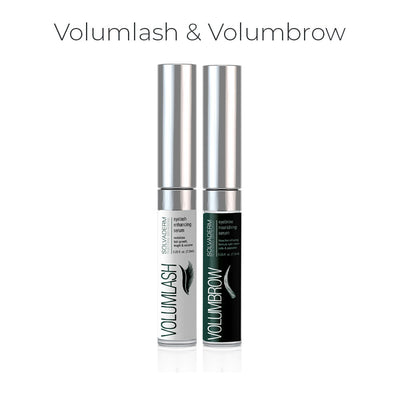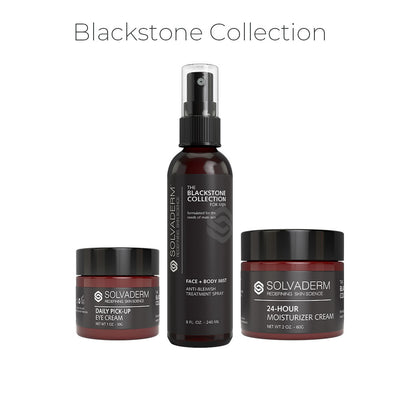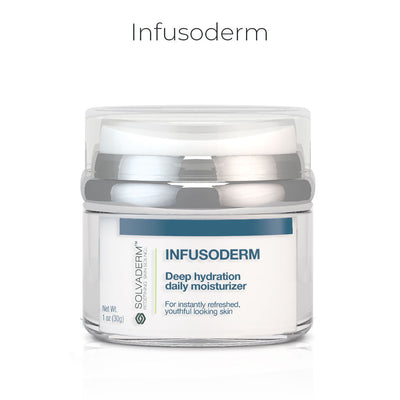Over the past several years, skin cycling has become one of the hottest new trends that dermatologists and skincare fanatics have brought to the table. If you’ve tried different products and routines and have not achieved the desired results, this method could be the answer. What is skin cycling?
This routine involves using different types of skincare products on different days, and it’s a fantastic way to systematically incorporate multiple active ingredients without overly sensitizing or irritating your skin. This method is also very easy to implement, making the results more than worth the effort.
If you’re a newbie to the skincare world or are just interested in trying a different approach, read on as we explain the process and tell you the best products for skin cycling.
What is Skin Cycling?
If you’re asking yourself, “What is skin cycling?” you should know that it’s a method that involves applying different products on different days to maximize results. As the name implies, you use different types of skincare in cycles to repair and regenerate your complexion and minimize the risk of irritation.
With skin cycling you strategically incorporate harsher products like retinol and exfoliating acids on certain days and more rejuvenating formulas on others. The days when you avoid the harsher products are called ‘rest days’.
One full skin cycling routine spans 4 or 5 days depending on your skin type, and then is repeated. Generally speaking, the main products that make up the regimen include cleansers, exfoliants, retinoids, and moisturizers.
How Does Skin Cycling Work?
Skin cycling involves alternating the use of harsher products that increase cell turnover rate with gentler hydrating creams or serums. This process can be incredibly effective, particularly because the ‘rest days’ between using exfoliating acids and retinoids allow the results from these products to settle.
The hydrating creams and serums you use on rest days also offer skin-barrier support to help your complexion recover from the harsher products and maximize their results. Here’s a breakdown of how each product in the skin cycling routine works:
-
Cleanser: This product removes dirt, oil, sebum, dead skin cells, and pollutants. Depending on your skin type, you may use either a gentle or more powerful cleanser.
-
Exfoliant: Exfoliants are defined as either chemical or physical. Chemical exfoliants like acids are most commonly used in skin cycling routines. Exfoliating acids brighten skin tone, improve texture, eliminate dead cells, and encourage cell turnover.
-
Retinoids: Retinoids are the most commonly used anti-aging products, and their benefits include smoothing fine lines and wrinkles, reducing hyperpigmentation, enhancing collagen production, unclogging pores, clearing breakouts, and reducing inflammation.
-
Moisturizer: Applying a moisturizer is usually one of the last steps in your skincare routine, to hydrate the complexion and prevent transepidermal water loss. Many moisturizers contain beneficial ingredients that smooth fine lines and wrinkles, repair the skin barrier, and protect against environmental pollutants.
Is Skin Cycling Beneficial For All Skin Types?
The American Academy of Dermatology[1] identifies five skin types: dry, oily, normal, combination, and sensitive. Skin cycling can be tailored to each, and depending on your type you can swap, add, or remove certain products from your routine.
Skin cycling is especially beneficial for sensitive skin, considering its susceptibility to the harshness of exfoliants and retinoids. When you limit your use of exfoliants and retinoids to specific days of the week it can significantly minimize redness and irritation. In addition, oily and combination skin also benefit from skin cycling.
Determining the best skin cycling system for you may require trial and error. If you find your routine is causing irritation, excessive dryness, or inflammation, stop and reevaluate. You can consult your dermatologist for further guidance on how to develop a unique skin cycling routine for your needs.
Skin Cycling Routine: Step by Step
Are you still asking yourself, “What is skin cycling?” If so, this step-by-step guide should give you the answer in detail.
Night #1: Cleanse, Exfoliate, Moisturize
On the first night, you’ll apply an exfoliating product. Begin by washing your face with a formula that isn’t overly stripping but is still effective at removing dirt, oil, debris, and makeup like Dermpura Skin Balancing Cleanser.
After cleansing, make sure your face is completely dry before applying the exfoliating product. We recommend a potent bioactive formula such as Glowpeel Dermal Exfoliation and Skin Resurfacing Repair Serum as one of the best products for skin cycling.
Begin by dispensing a few drops of the product onto your fingers, and then spread a thin layer over your face. Many exfoliating treatments should be left on for about 5 minutes and then rinsed off to neutralize the solution, but check and follow the instructions for the specific formula you use.
After exfoliating, finish off your routine by applying a hydrating formula like Infusoderm Deep Hydration Daily Moisturizer to revitalize and refresh your complexion.
Night #2: Cleanse, Apply Retinoid Night Cream, Moisturize
On the second evening of your skin cycling routine, incorporate a retinoid night cream as your active formula. Start by cleansing your face, as having clean skin ensures that the retinoid cream can penetrate properly.
After cleansing, dry your face completely, then apply a pea-sized amount of a product like Suvoderm Retinol Night Cream evenly across your face and neck. Be careful to avoid direct contact with your eyes. If the retinoid product is a serum you should follow up with a moisturizer, while if you use a cream there’s no need for an additional hydrating formula.
Nights #3 and 4: Cleanse and Moisturize
The third and fourth evenings of your skin cycling routine are for recovery. Begin by cleansing your face as usual, and then follow up with a hydrating moisturizer. Giving your skin a break from actives allows for rejuvenation and optimizes your results.
Best Products to Include in Your Skin Cycling Routine
In order to carry out the method we have outlined, you’ll need a cleanser, exfoliant, retinoid product, and moisturizer. These are some of the best products for skin cycling in each category which we highly recommend.
Dermpura Skin Balancing Cleanser: This formula deeply purifies the complexion with a gentle foaming action to effectively remove dirt, impurities, and makeup. Although it’s a powerfully cleansing formula, it isn’t overly stripping and leaves your skin soft and smooth. This product includes botanical oils, antioxidants, and vitamins to enrich your skin.
Glowpeel Dermal Exfoliation Serum: Glowpeel is a gentle but very powerful exfoliant that includes alpha hydroxy acids to enhance skin brightness, encourage cell turnover, and boost collagen production. Due to its gentle formula, this product is suitable for all skin types.
Suvoderm Retinol Night Cream: This two-in-one formula is both a retinoid and a moisturizer that reduces fine lines and wrinkles, encourages collagen production, and promotes soft, radiant skin.
Suvoderm Retinol Night Cream features beneficial ingredients like niacinamide, vitamin E, hyaluronic acid, and coenzyme Q-10. A customer satisfaction survey revealed that 100% of women noticed a dramatic decrease in wrinkle depth and a significant increase in skin elasticity after two weeks of use.
Infusoderm Deep Hydration Daily Moisturizer: Ideal for any skin cycling regimen, this moisturizer provides powerful hydration while refreshing and revitalizing the complexion. It contains antioxidant and nutrient-rich ingredients such as snow algae and cloudberry which repair damage to the skin barrier, nourish, and brighten. In a user satisfaction survey, 97% of participants noticed a reduction in the appearance of dull skin, and 87% reported a decrease in dryness with regular use of this formula.
What Are the Benefits of Skin Cycling?
Skin cycling allows you to incorporate active ingredients into your routine while preventing the redness, excess dryness, and irritation that often accompanies using them. Systematically cycling through different skin resurfacing products while taking rest days can lead to brighter and smoother skin.
The rest days in your skin cycling regimen may also help to support the skin barrier, which carries out essential functions like protecting your complexion from pathogens, pollutants, chemicals, and allergens. Proper skin barrier function also prevents transepidermal water loss, which can contribute to dehydration and aging.[2]
There are many benefits to including an exfoliant with ingredients like alpha hydroxy acids (AHAs) in your skin cycling routine. Research[3] shows that regular use of AHAs can reduce wrinkles, heal acne, fade hyperpigmentation, and smooth skin texture.
Similar to chemical exfoliants, retinoids also deliver many benefits and are among the most potent anti-aging ingredients. Research[4] indicates that they may help reduce wrinkles, stimulate collagen production, strengthen the protective function of the epidermis, and protect against the oxidative stress that can contribute to aging. Retinoid products may even reduce acne and related scarring.[5]
Who Should Try the Skin Cycling Trend?
Skin cycling is especially ideal for sensitive skin, which is prone to the harsh side effects of exfoliants and retinoids. The designated rest days can minimize the redness and irritation these harsh formulas may cause.
This new trend is also ideal for people building a skincare routine for the first time, or who want to try a retinoid but are nervous about potential side effects. Following a cycling schedule makes it easy for skincare beginners because the steps and types of products to use are clearly outlined. Consult with your dermatologist if you have any additional questions about skin cycling or would like product recommendations.
Frequently Asked Questions
How Long Should You Wait To Apply Moisturizer After Retinol?
There are hydrating products that include retinoids, in which case there is no need to follow up with an additional moisturizer. If you use a retinol serum, we suggest that you wait 5-10 minutes before applying moisturizer. Some dermatologists recommend that people with sensitive skin use a combined retinol and moisturizer to prevent redness and irritation.
Does Skin Cycling Clear Up Acne?
The exfoliants and retinoids included in a skin cycling routine can reduce or prevent acne by controlling sebum production, increasing skin cell turnover, and decreasing inflammation.
However, skin cycling isn’t guaranteed to eradicate acne, as the condition has many potential causes[6] including poor diet, hormonal imbalance, stress, environmental pollutants, clogged hair follicles, and oily makeup or skincare products.
How Long Should I Try Skin Cycling?
Some dermatologists say you can experience powerful results after 2-3 skin cycles, which is about 2 weeks. However, results may vary depending on your skin type and the quality of the products you use. Skincare formulas like exfoliants, retinoids, and moisturizers can take up to 6-8 weeks for full benefits. For best results, be consistent with your routine.
Conclusion
What is skin cycling? This is a generally beneficial skincare trend that can be tailored to all skin types and is especially helpful for a sensitive complexion. In addition, it’s easy to implement by following the 4 simple steps we have outlined.
Your results may vary depending on the quality of the skincare you include in your regimen. We’ve recommended some of the best products for skin cycling in this article, including a cleanser, exfoliant, retinoid, and moisturizer to maximize your results. With the help of these formulas, consider implementing a skin cycling routine for a brighter, smoother, healthier complexion.
References
1] ↑https://www.aad.org/public
2] ↑https://www.ncbi.nlm.nih.gov/pmc/articles/PMC5967208/
3] ↑https://www.ncbi.nlm.nih.gov/pmc/articles/PMC6017965/
4] ↑https://www.ncbi.nlm.nih.gov/pmc/articles/PMC6791161/
5] ↑https://my.clevelandclinic.org/health/treatments/23293-retinol
6] ↑https://www.aad.org/public/diseases/acne/causes/acne-causes










